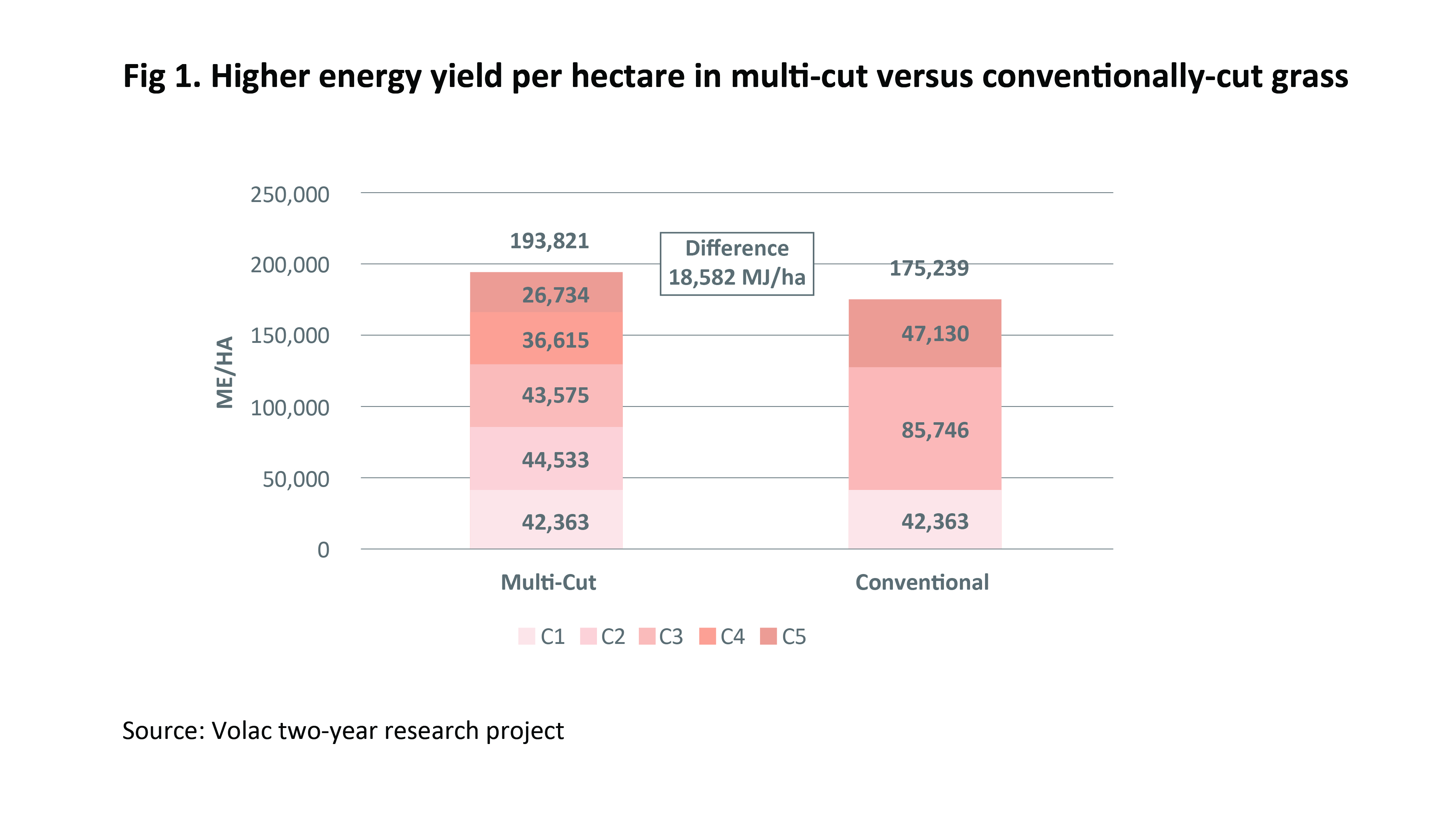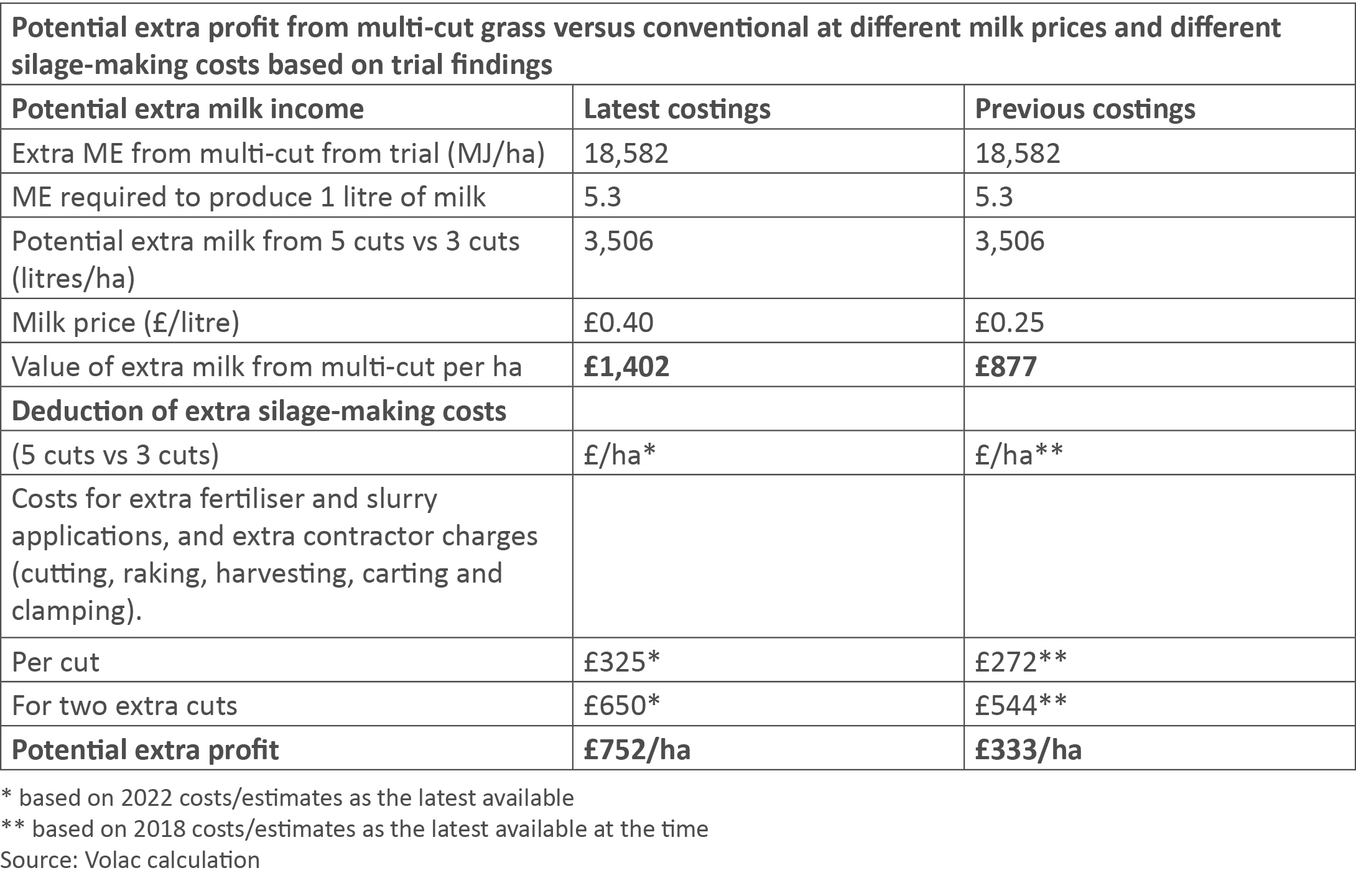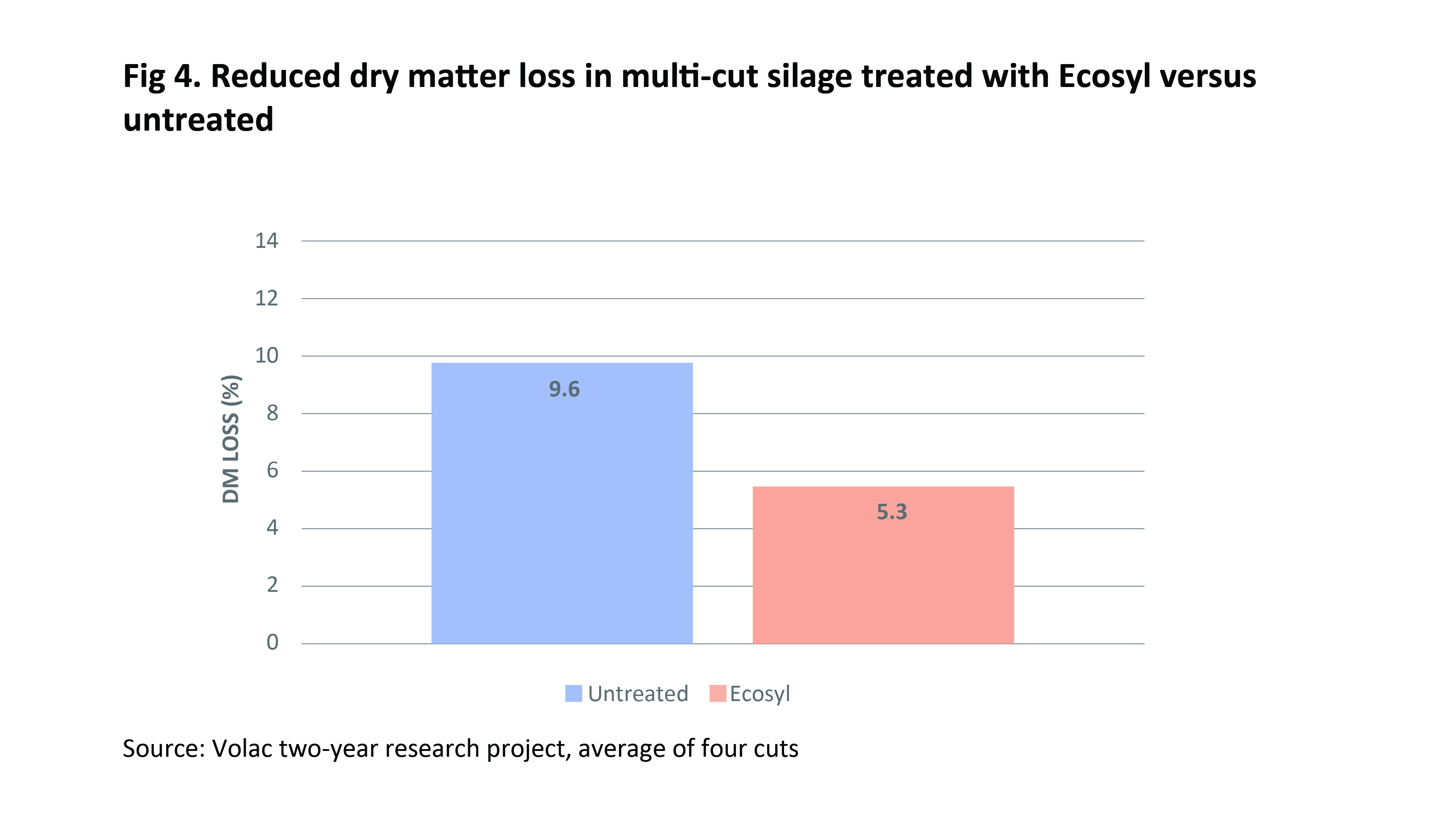New analysis points to higher profit from multi-cut grass
11 April 2023
Cutting grass in a multi-cut silage system has the potential to be over £700/ha more profitable than a traditional three-cut approach, even if milk price is dropping towards 40 pence/litre (p/l). Moreover, despite increased silage production costs, the financial benefit of multi-cut grass over three cuts has more than doubled in the last few years.
Moreover, despite increased silage production costs, the financial benefit of multi-cut grass over three cuts has more than doubled in the last few years.
Those are the findings from a new analysis conducted by Volac – using previous on-farm trial results which found that fresh-cut grass from a five-cut system had the capacity to support an additional 3,506 litres/ha of milk from forage.
This was after five cuts were found to deliver 18,582 MJ/ha more metabolisable energy (ME) than three cuts, says Volac silage scientist Dr Mark Leggett, due to five cuts yielding more total dry matter (DM) over the season and having a higher average ME.
Applying a milk price of 25 p/l at the time of the trial (2019) to these extra 3,506 litres/ha of milk showed multi-cut was £333/ha more profitable,” says Dr Leggett. “This was after deducting £544/ha of extra costs for application of fertiliser and slurry, as well as contractor charges for cutting, raking, harvesting, carting and clamping the two additional cuts.
“Now, bringing this up to date by applying a higher, but still modest, milk price of 40 p/l has revealed the financial advantage of multi-cut over three-cuts to have more than doubled – to £752/ha. Again, this was after deducting the additional outlay for the two extra cuts, this time of £650/ha to reflect cost increases.”
The significance of this latest analysis, says Dr Leggett, is that with fertiliser and contracting costs having increased over recent years, and milk prices dropping back from the highs of 2022, farmers may be questioning the value of making multi-cut. “Clearly, it’s not a system that suits all farms,” he says, “but for this particular analysis, its extra benefit was clear.
The other important finding from the original trial was the multi-cut grass was also 2.8% higher in crude protein. Producing higher quality grass by cutting younger and more often with multi-cut may not allow producers to reduce the tonnage of concentrate purchased. However, it might mean a lower-cost concentrate, with lower ME and lower protein, can be fed. It might also mean less imported protein is used. Alternatively, higher quality grass may be used to help improve milk yield.
Dr Leggett notes the DM yield and quality results from the original trial were from fresh grass samples. He says the benefits of improved grass quality will not be seen unless the crop is preserved correctly. So further Volac research looked at multi-cut conservation – this time across four cuts.
Dr Leggett says: “Compared with leaving grass untreated, the work found that treating with the additive Ecosyl – which applies a million Lactiplantibacillus plantarum MTD/1 bacteria per gram of forage – reduced DM losses on all four cuts, and on two of the cuts by more than half. The results also pointed to better protein preservation by using the additive, and the number of enterobacteria – the undesirable bacteria associated with slurry – in the treated silage was up to 100,000 times lower.
Using a proven additive to improve conservation of a multi-cut crop is an important consideration, since shorter intervals between cuts allows less time for slurry bacteria to decline. Also, the higher protein content of younger grass can contribute to buffering of the fermentation. The combination of high buffering and the action of slurry bacteria can lead to DM and nutrient losses. With farmers looking to improve milk from forage, it makes little sense to produce multi-cut as a way of improving forage quality if that quality is then lost during ensiling.


With the drive to maximise milk (and meat) from forage by making better quality silage, learn more about how multi-cut grass can benefit your farm here.
